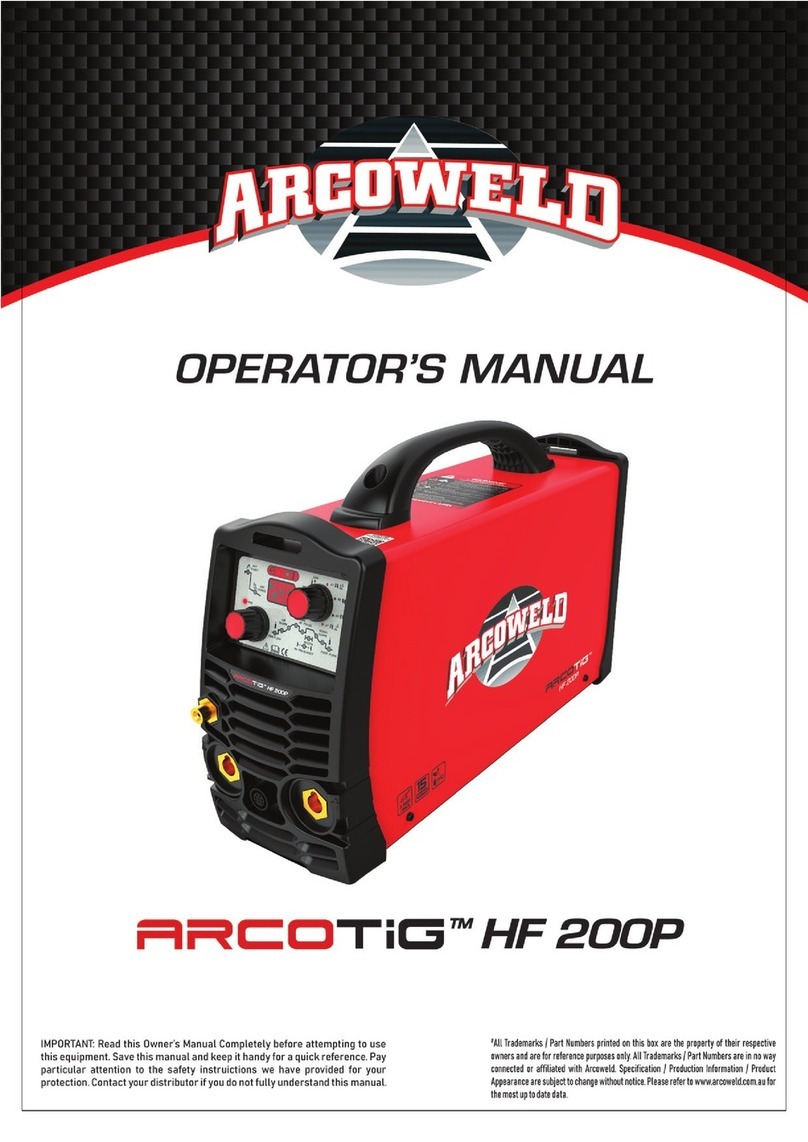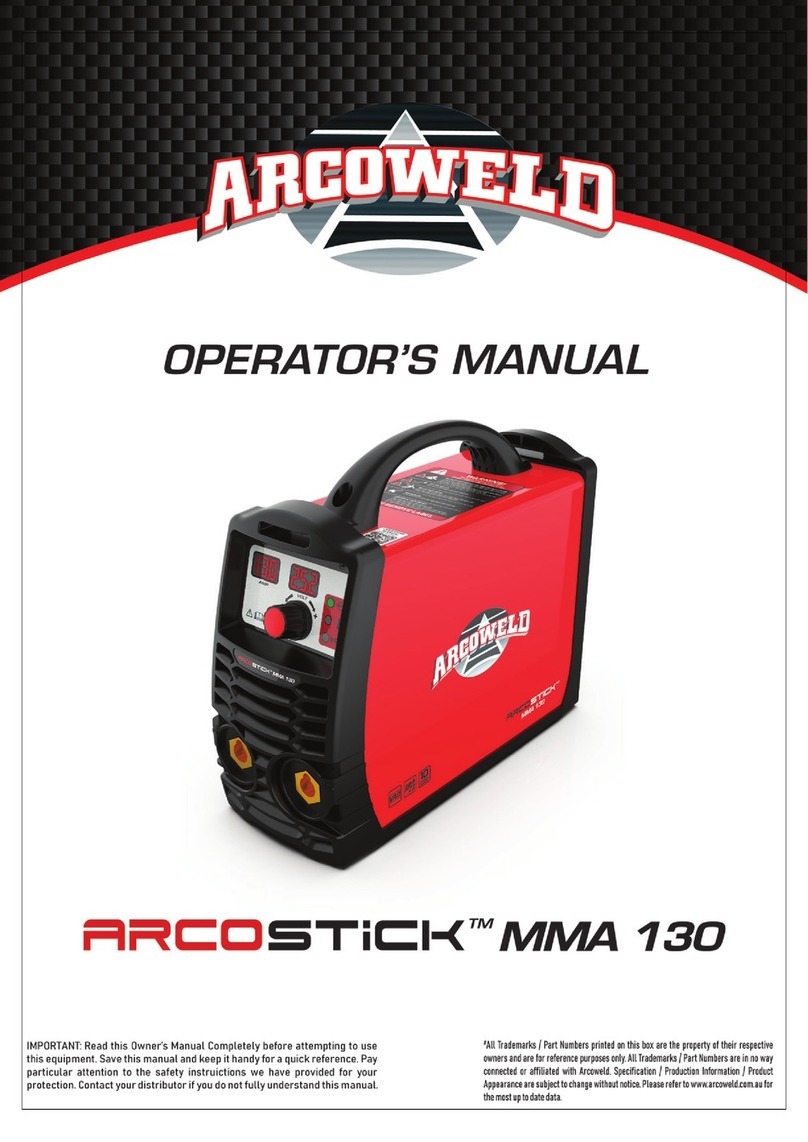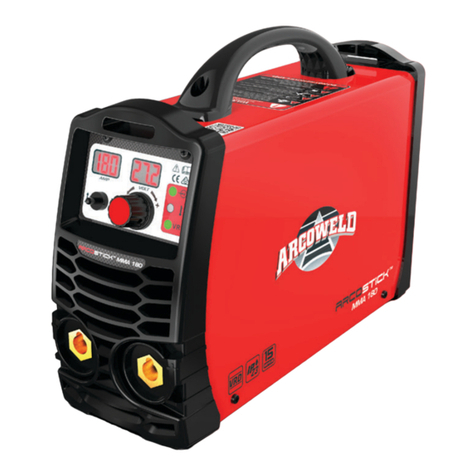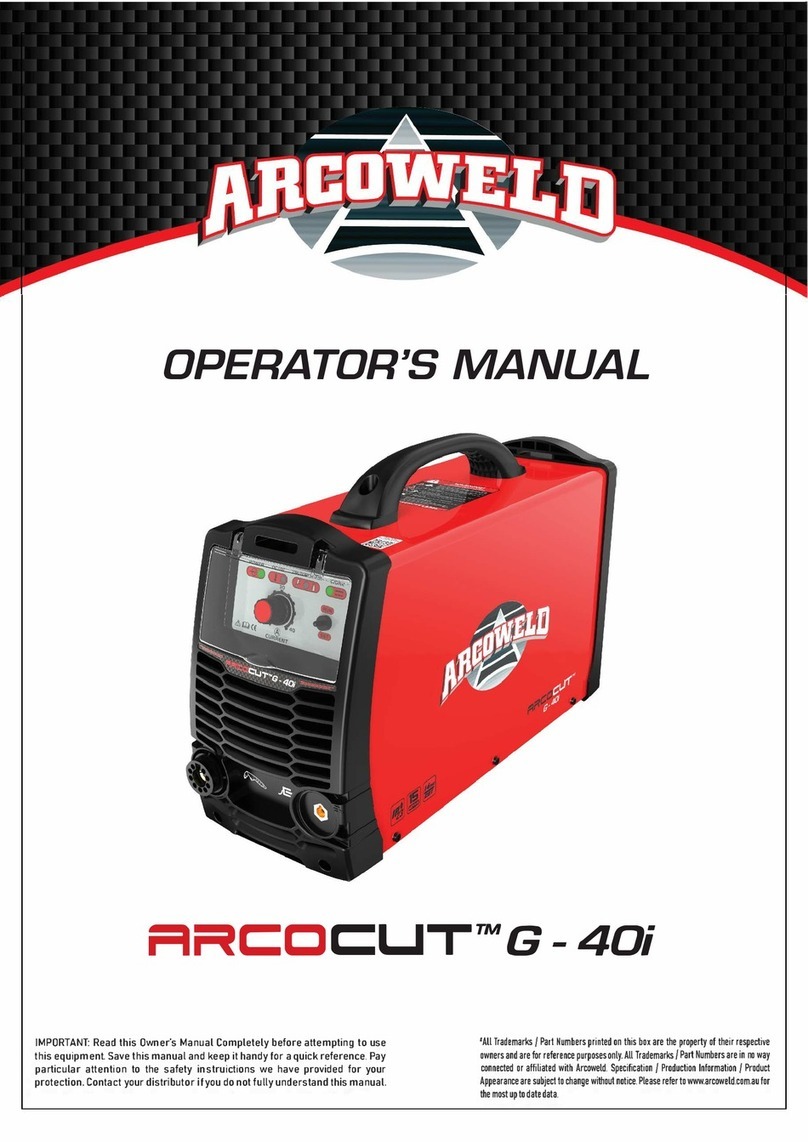
SUMMARY
5
semiautomatic welding torch are also electrically “hot”.
Always be sure the work cable makes a good electrical connection with the metal being welded. The
connection should be as close as possible to the area being welded.
Maintain the electrode holder, work clamp, welding cable and welding machine in good, safe operating
condition. Replace damaged insulation.
Never dip the electrode in water for cooling.
Never simultaneously touch electrically “hot” parts of electrode holders connected to two welders
because voltage between the two can be the total of the open circuit voltage of both welders.
When working above floor level, use a safety belt to protect yourself from a fall should you get a
shock.
FUMES AND GASES CAN BE DANGEROUS.
Welding may produce fumes and gases hazardous to health. Avoid breathing these fumes and gases.
When welding, keep your head out of the fume. Use enough ventilation and/or exhaust at the arc to
keep fumes and gases away from the breathing zone. When welding with electrodes which require
special ventilation such as stainless or hard facing or on lead or cadmium plated steel and other metals
or coatings which produce highly toxic fumes, keep exposure as low as possible and below Threshold
Limit Values using local exhaust or mechanical ventilation. In confined spaces or in some circumstances
outdoors, a respirator may be required. Additional precautions are also required when welding on
galvanized steel.
Do not weld in locations near chlorinated hydrocarbon vapors coming from degreasing, cleaning or
spraying operations. The heat and rays of the arc can react with solvent vapors to form phosgene, a
highly toxic gas, and other irritating products.
Shielding gases used for arc welding can displace air and cause injury or death. Always use enough
ventilation, especially in confined areas, to ensure breathing air is safe.
Read and understand the manufacturer’s instructions for this equipment and the consumables to be
used, including the material safety data sheet and follow your employer’s safety practices.
ARC RAYS CAN BURN.
Use a shield with the proper filter and cover plates to protect your eyes from sparks and the rays of


































